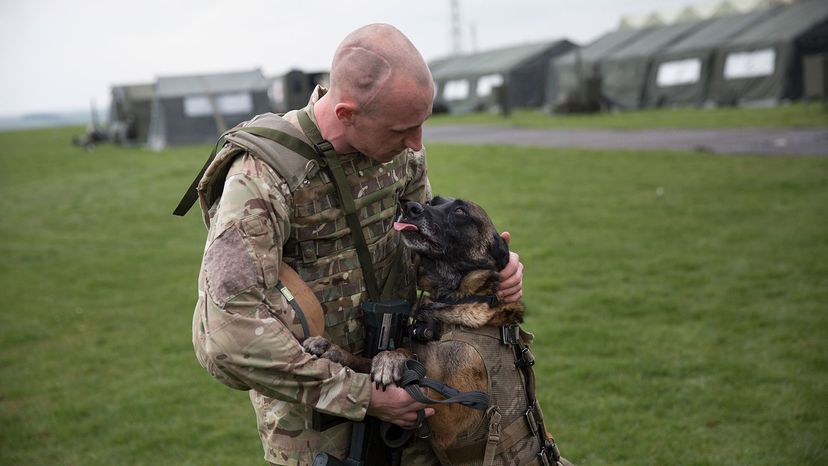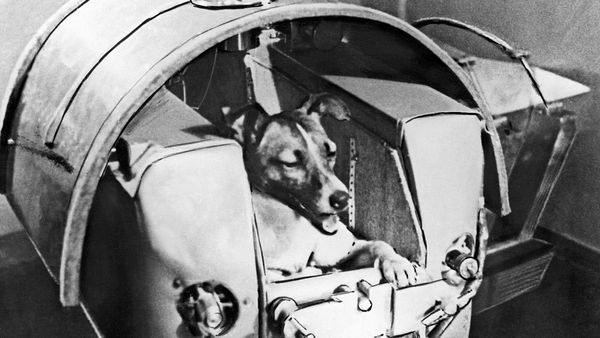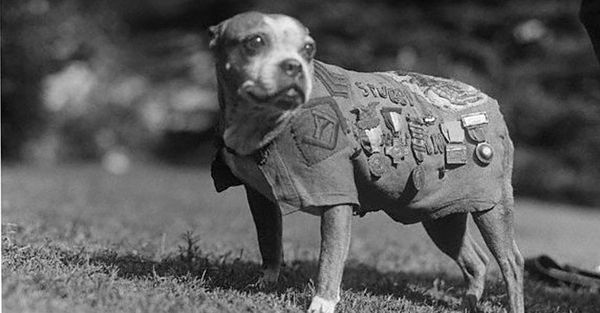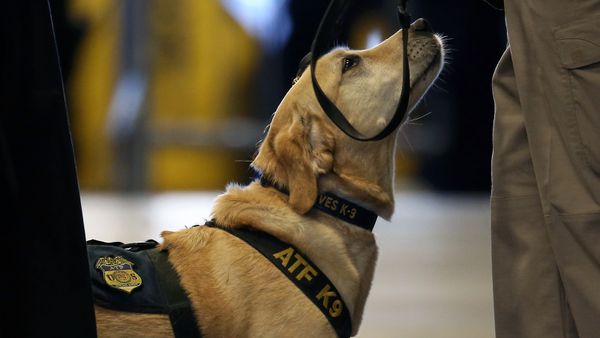
Humans have drafted dogs into wartime duties from as far back as 600 B.C.E. Faithful and affectionate to their handlers, dogs were trained to savagely attack the enemy, causing confusion and fear. Dogs have also been deployed as scouts, bomb detectors, sentries and couriers. The United States military has a long and furry history with military working dogs (MWDs), and remarkably, the dogs usually outrank their human handlers.
"It's a matter of tradition as well as military custom. Most dog handlers start their careers as E-3s (Private First Class) to E-5s (Sergeant) depending on the service," emails Air Force Maj. Matthew Kowalski, Commander in the 341st Training Squadron, which provides training to military working dogs in San Antonio. "The dog, being a non-commissioned officer, or NCO, would outrank or match in rank to their handler."
Advertisement
In America, military officials regard MWDs as incredibly valuable assets, ones that require a lot of time, effort (and money) to properly train and deploy for action. When they serve with courage, they're lavished with awards ceremonies and medals. And when they die, they're buried with honors. (The passage of the Robby Law in 2000 allowed for retired military dogs to be adopted. Before that, they were euthanized.)
These traditions cement in the minds of their human counterparts that the dogs are vital to missions, like the October 2019 raid that killed Islamic State leader Abu Bakr al-Baghdadi. Reports indicate that a highly trained Belgian Malinois helped corner the terrorist, who subsequently detonated a suicide belt that killed him, along with two children. The MWD, named Conan, was injured during the raid but quickly returned to duty.
In 2011, another MWD was strapped into body armor and transported via helicopter to a secretive compound in Pakistan. There, the dog helped Navy SEAL Team 6 end one of the biggest manhunts in human history by taking down Osama bin Laden.

"Showing respect to a fellow NCO and deference and respect to an NCO as a lower-ranking service member allows for mutual respect between the partnered team and would discourage mistreatment of the dog in theory," says Kowalski.
"As for the combat effectiveness of a military working dog, these dogs have been used in combat since the written record existed. Whether for protection of troops, finding enemies in tunnels during Korea and Vietnam, or finding roadside bombs in Afghanistan and Iraq, no piece of technology will ever be as good as a dog at detection and protection work," he says.
Advertisement


